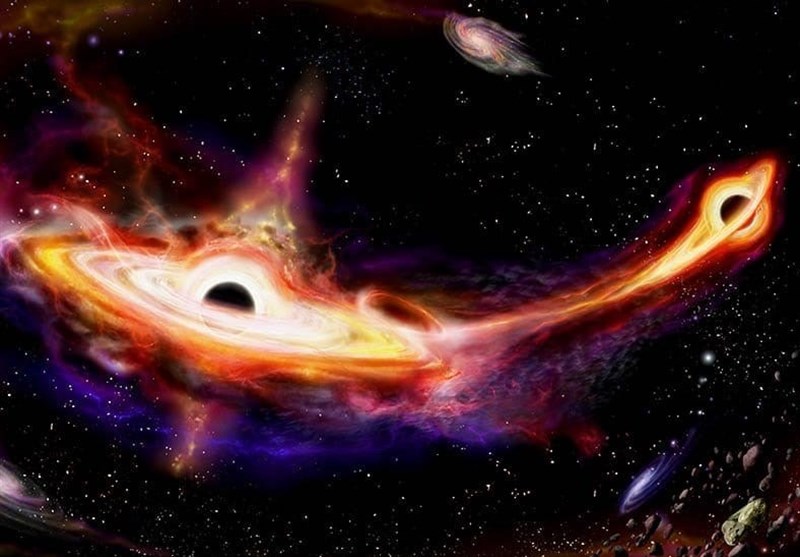Size of Supermassive Black Hole Divulged by Eating Pattern
TEHRAN (Tasnim) – Astronomers have finally linked the size of a supermassive black hole to the spectral patterns generated by its eating habits.
Most nearby supermassive black holes are dormant. These long-sated, sleeping giants ate up their supply of gas and dust many millions of years ago, leaving them dark and quiet.
To identify dormant black holes, scientists must measure their gravitational influences on nearby stars and gas clouds.
In the distant cosmos, however, scientists can observe supermassive black holes as they were during the early universe, when these rapidly growing galactic centers were accreting prodigious amounts of stellar material and outshining whole galaxies.
According to a new study, published Thursday in the journal Science, the size of a supermassive black hole is revealed by the object's eating pattern.
When a supermassive black hole pulls material into its accretion disk, the captured gas and dust gets condensed and forms what's called a corona, which yields extremely bright X-ray light.
The light emitted by the accretion disk and its corona is not constant, but flickers.
Flickers of electromagnetic radiation can form patterns across time-scales as short as a few hours or as long as several decades.
"There have been many studies that explored possible relations of the observed flickering and the mass of the SMBH, but the results have been inconclusive and sometimes controversial," lead study author Colin Burke, an astronomy graduate student at the University of Illinois Urbana-Champaign, said in a press release.
For the new study, researchers compiled a large record of variable flickering patterns produce by actively feeding SMBHs. Though flickering patterns produced by a black hole's consumption are random, researchers can quantify the power of a black hole's variability as a function of timescales.
For white dwarfs, collapsed sun-like stars, researchers confirmed a black hole's mass was tightly correlated with the variability timescale.
The relation was easier to observe among white dwarfs, which are millions to billions times less massive than SMBHs.
For supermassive black holes, the stretched out timescales make variability patterns harder to decipher, but researchers confirmed that the same relationship between mass and variability timescales is present among the even the largest black holes.
"These results suggest that the processes driving the flickering during accretion are universal, whether the central object is a supermassive black hole or a much more lightweight white dwarf," said co-author Yue Shen, professor of astronomy at the University of Illinois.
Astronomers hope their work will lead to the discovery of intermediate black holes, IMBHs -- those with a mass between 100 and 100,000 times the mass of the sun.
Scientists have found and studied thousands of stellar-mass black holes and supermassive black holes, but only one confirmed IMBH has been discovered.
"Now that there is a correlation between the flickering pattern and the mass of the central accreting object, we can use it to predict what the flickering signal from an IMBH might look like," Burke said.
Beginning in 2023, the Vera C. Rubin Observatory in Chile will carry out the largest-ever survey of flickering light across the cosmos -- The Legacy Survey of Space and Time survey will measure the flickering patterns of billions of objects.
"Mining the LSST data set to search for flickering patterns that are consistent with accreting IMBHs has the potential to discover and fully understand this long-sought mysterious population of black holes," co-author Xin Liu, an astronomy professor at Illinois.






